What is a piragi?
Piragi are small crescent-shaped pork buns filled with chopped bacon and onion, usually served as a treat, but we think it’s best as a snack or an appetizer! In Latvia, this is typically served during special occasions and celebrations such as the Jani, or Christmas.
What are the list of ingredients needed to make this Piragi pork bun?
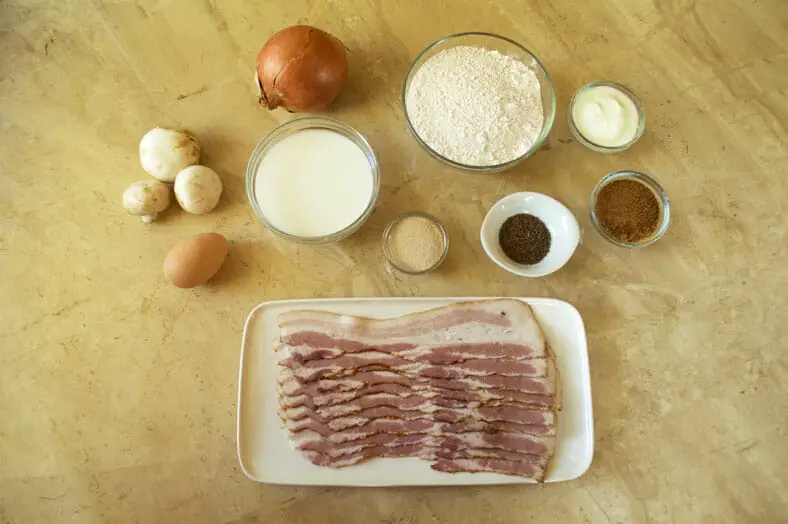
To make a piragi bacon buns, you will need:
- Onion
- Greek yogurt
- Bacon
- Egg (for egg wash)
- Salt
- Milk
- Butter
- Sugar
- Yeast
- Warm water
How do you make piragi?
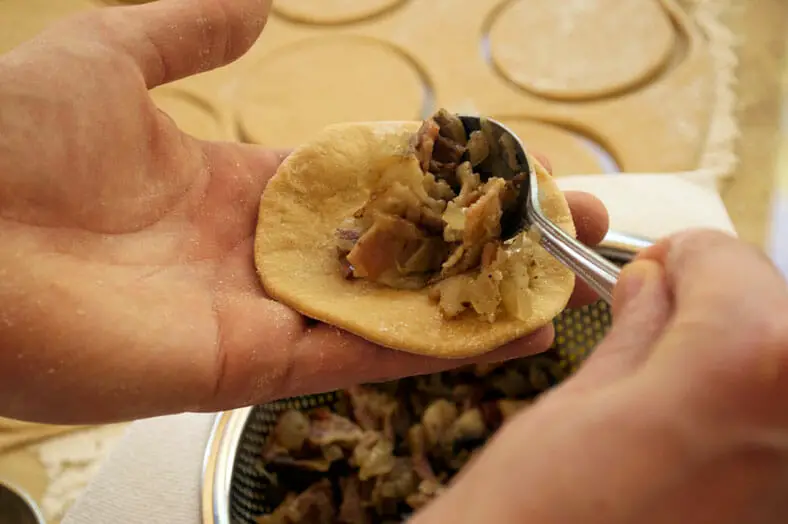
1. To make the filling, fry chopped onions and bacon in a pan. Add salt to taste. Let the filling cool before using it.
2. To make the dough, mix milk, butter, salt, sugar, yeast and warm water in a bowl. Knead the dough until it is smooth. Let it rise for about 30 minutes.
3. Preheat oven to 200 C / 400 F .
4. Roll out the dough on a floured surface and cut out circles with a glass or a biscuit cutter.
5. Put 1 tablespoon of filling in the center of each circle and fold over to form a half moon shape. Press the edges together with your fingers or fork to seal them well
6. Bake for 15 minutes or until golden brown

Pīrāgi and Jani
Before piragi, let’s first familiarize ourselves with one of the biggest days in the Latvian year.
The celebration of Jani originally began as an ancient festival in honor of the Latvian pagan god Janis. In order to connect most deeply with their oft-considered “son of God,” the ancient Latvians would celebrate on days near to the summer solstice, although at some point the dates were more formally locked into June 23-24.
Jani is a ceremony rife with earthly costumes and wreathes, large bonfires, and jovial singing of ligo and reciting of dainas. Of course, there are massive quantities of delicious food, but that’s a discussion for a bit later. To top it off, the celebrations continue pretty much non-stop through the night.
Make no mistake about it… Jani is a good time for all.
It’s so interesting to me, to see what types of food countries around the world celebrate holidays such as this pork bun in Latvia. In Vietnam, it’s the rice cake, or moon cake that is eaten during New Year (banh chung). In Sweden, it’s a sweet treat known as Saint Lucia Saffron buns , among many other holiday treats around the world.
Jani and Superstitions
Celebrating Jani corresponded with its fair share of superstitions. When the holiday was more deeply rooted in pagan beliefs, people lined their houses with branches from the rowan tree (which held great significance in Northern Europe) and thorns as a form of protection from the witches and evil spirits flying overhead. Doubling as a further safeguard and a promise for prosperity and fertility in the upcoming year, these people would set up and jump over large bonfires that burned from sunrise to sunset. Especially considering the summer solstice sometimes meant 21+ hours of consecutive daylight, this feat was particularly impressive to us.
Over time, the theme of fertility grew increasingly important to the central celebration of Jāni. One of the common practices for the celebration involved gathering various herbs that were believed to possess magical powers on these special days. With the herbs, the people could perform rituals to predict the productivity of their upcoming crops and to heighten livestock fertility. For the humans, there was the fern flower, a flower strongly tied to mythic powers, good fortune and for being quite an aphrodisiac.
And above all, don’t get caught sleeping during Jāni, or you risk being doomed to sleep an entire summer of sleep and sloth.
Then again, that might not be too bad either.
The Jani Feast
For a celebration that brings together friends and family and is full of songs and dance, of course you’d expect there to be a delicious accompanying feast. In this respect, not only does Jani not disappoint but goes above and beyond expectations.
The two most prominent elements of the feast are (traditionally home-brewed) beer and Jāņu siers, or a rich cheese made with caraway seeds. Not too far behind, however, is today’s bacon pie special, the piragi.
Especially back in the times when Latvia was a primarily agrarian society, piragi served as a form of bragging rights, especially around celebrations and holidays. For those with bountiful wheat harvests or extra healthy livestock, making these bacon pies was an effective yet tasteful (pun intended) way to boast their fortunes to their neighbors and community.
Coming to the party with delicious piragi usually preceded high praise and adulation from others. Coming to the party with slightly burnt or less-than-stellar bacon pie, however, meant “special treatment” when singing the teasing ligo songs.

About this Latvian Piragi Recipe:
When making these bacon pies, there are three distinct phases: making the dough, making the filling, and putting it all together.
First, your piragi dough will be similar to what you’d expect when making any sort of other bread products with yeast as a leavening agent. The key difference for piragi specifically, however, is the dairy ingredients used, which will give you a dough that’s far richer than normal.

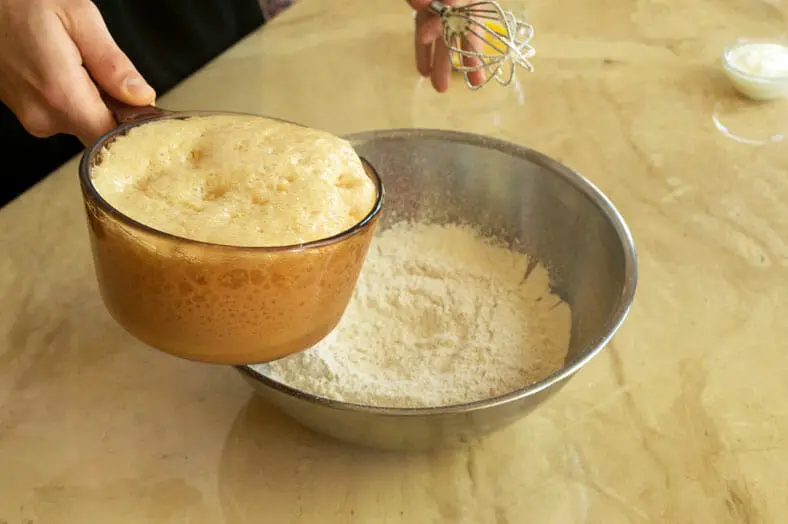
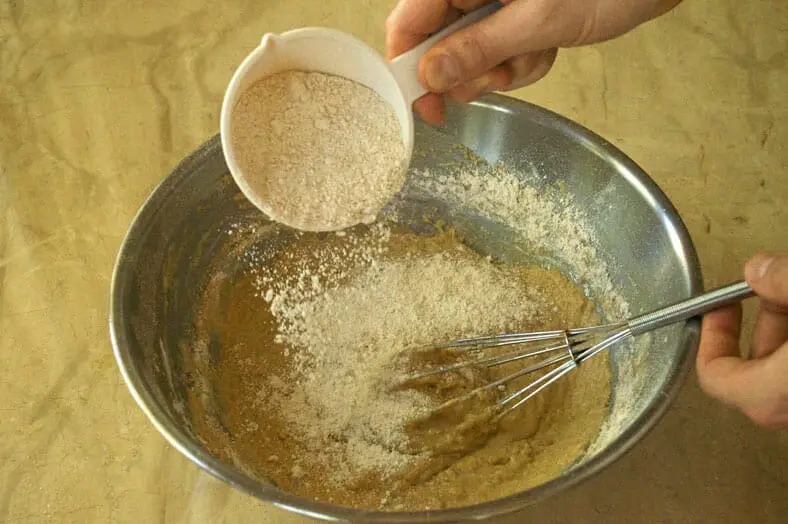
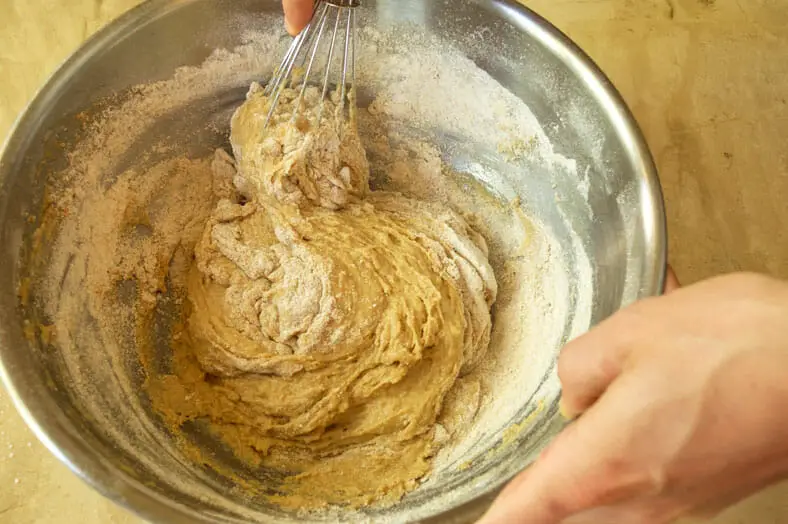
Step 1 – Make the Piragis dough
To start, you’ll activate your yeast in a mixture of heated milk and sugar. As the yeast activates and bubbles up, you’ll want to sift your flour to get rid of any clumps as well as prepare your other dough ingredients for a speedy assembly. Once your yeast is nice and active, add it to your flour followed quickly by your remaining ingredients. After a good bout of stirring, you should have a nice, firm dough that you’ll set aside and let rise for at least an hour.
Step 2 – Fill it with bacon and other goodies
The next component to your bacon pie (and certainly the tastiest) is, well, your bacon filling. The most traditional ingredient for piragi filling will be some sort of bacon, but really anything can go in if you feel brave enough to weather any potential ligo songs. When preparing your filling, it’s helpful to pre-cook your ingredients and to soften them up, especially since the piragi won’t need very long in the oven to cook. In fact, we’d definitely recommend that you do pre-cook your filling here.

Step 3 – Roll the dough
Once you have both filling ready and a dough that’s risen nicely, you’ll knead and roll your dough to a ~1/4 thickness on a well floured surface. Cut out circular pieces of your dough from the larger piece, and place it in your hand.

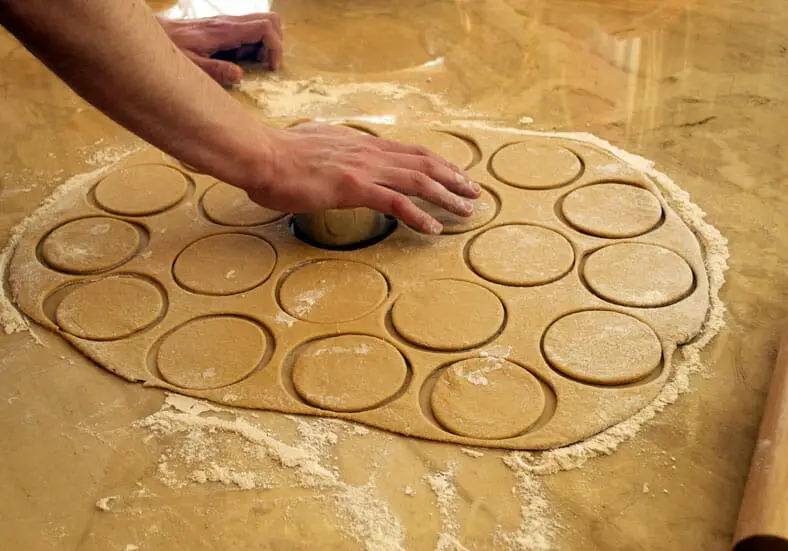
Step 4 – Add filling and shape the Pirags
And here’s when the fun really begins. With a pristine piece of circular piragi dough in your hand, use your thumbs to slightly lengthen the dough from all sides because, hey, a little extra pliability never hurt anyone. Take a small spoonful of filling – a teaspoon is more than enough – and place it right in the middle of your dough.

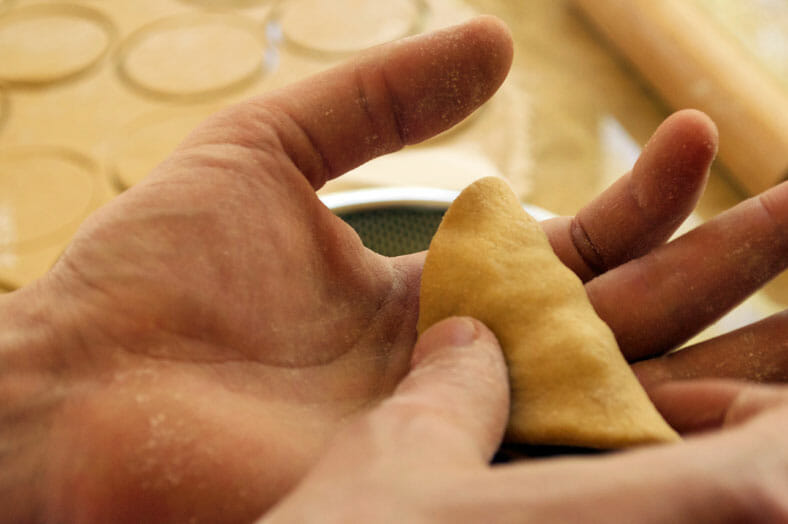
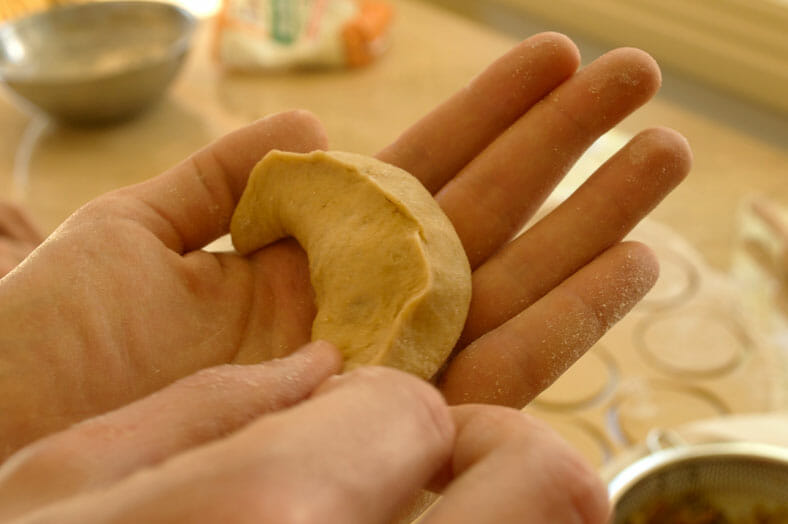

For the best chances of success, you’ll want to take one side of the dough, fold it over to the other side and then tuck it underneath the filling. Not only does this secure the filling in its place, but it will make it far easier to create the charming crescent moon shape you see with piragi. From there, fold the other side in towards the middle and pinch both sides together, and there you have it!
Step 5 – Bake it for 15-20 minutes
Place your piragi onto your well-greased baking sheet and line the top with a nice bit of egg wash. After ~15-20 minutes of baking in the oven, your piragi are ready to go and enjoy.

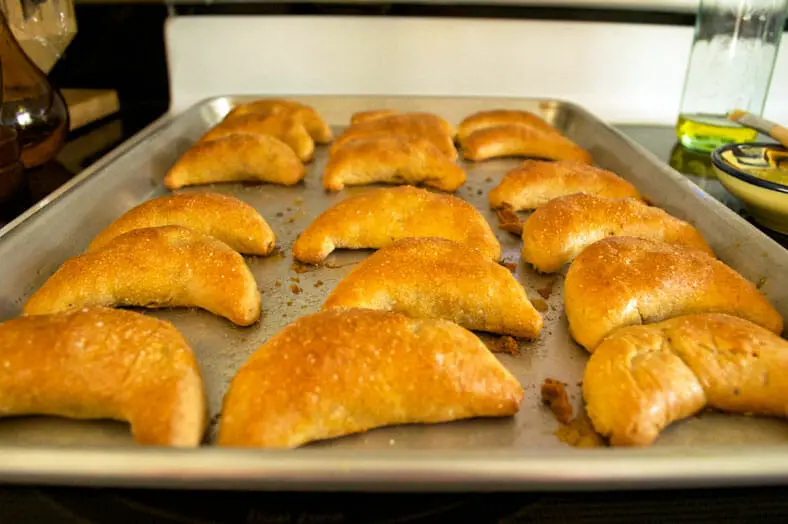
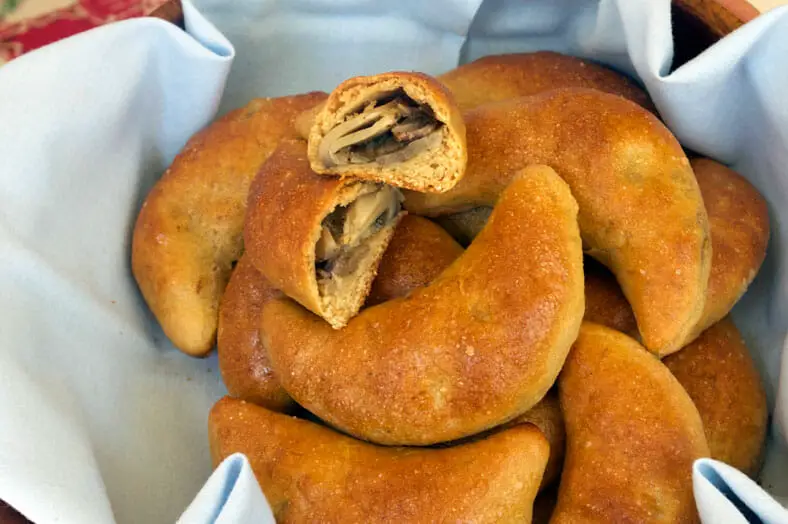
Our Take on the Recipe
Especially with a more decadent dough expected, we wanted to make sure that we had the right original reference recipe to go off of. We found it here, although we nevertheless did make our own adjustments.
For one, we actually found the root recipe to have a dough that (at least for us non-Latvians) came out a bit too heavy. To remedy this, we omitted the heavy cream altogether. To regain a bit more of the richness, we then substituted sour cream with Greek yogurt. Net-net, the flavor of the dough came out the same with these adjustments, but the consistency of the dough became far more agreeable to us.
In the spirit of Jāņu siers, we added some caraway seeds to our filling, and it was a very enjoyable call. In addition to some extra diced mushrooms added, our piragi filling took on an entirely new dimension of flavor from these simple additions. Non-traditional as it very well might be, we can’t recommend enough what it does for the dish overall.
Finally, as we do with most dough-based recipes here on Arousing Appetites, we made some substitutions for our preferred ingredients. Instead of regular sugar, we used a slightly healthier coconut sugar, and we used organic pastry flour instead of traditional industrial all-purpose flour.
All in all, both between the exploration of Jāni and its fun traditions, superstitions and food, this was an incredibly fun culinary exploration we’d readily recommend you try.
Labu apetiti!
Have you celebrated Jāni or tried piragi? Comment below!
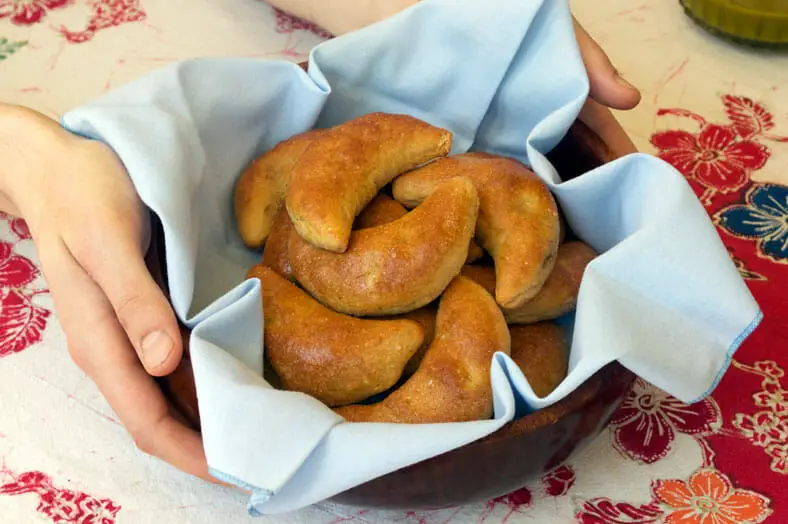

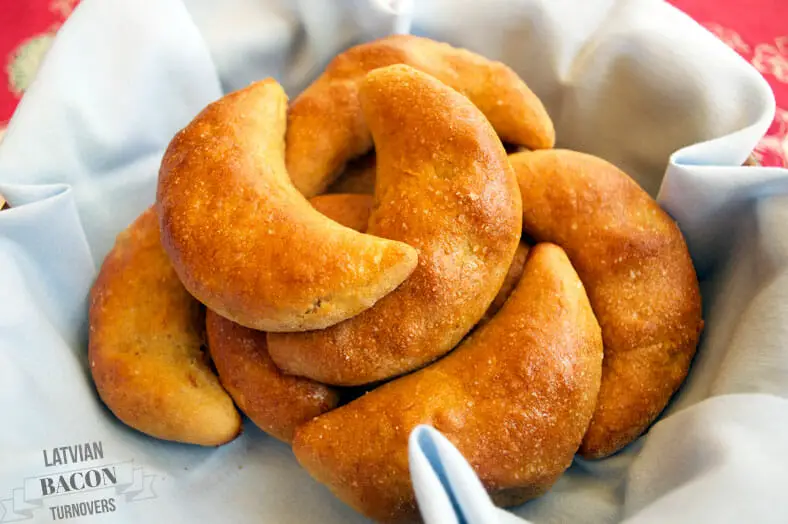
Cyrus, I’ve decided your a human version of a world globe. I had a Latvian friend growing up and he celebrated Jani! We should line our houses with trees for noruz.
Hahah, thanks Arman, although Heather is as much a human globe as I am in that case 🙂 Did you ever have the chance to celebrate Jani with him? And sounds good.. next Nowruz we’re in!
It has bacon….enough said. Seriously, these look delicious and how I love their shimmery golden color. 🙂
Yep… Bacon is really all I need to be sold on it too, Manila Spoon 🙂 And the egg wash is the trick for the shimmery golden color
You had me at bacon! OMG these look incredible!!!
Bacon is a very powerful force indeed, Lisa 🙂
Give these a try and let us know how it goes!
Love these piragi, especially with the lightened dough you developed. Eastern European Jews have something not quite the same, called a knish, but not with bacon:). I’m a huge bacon fan though, so this is right down my alley.
Very intriguing, Laura. Does knish have any sort of filling at all? Even if it’s not as alluring as bacon might be, we’d love to check it out 🙂
I’ve had pierogis since I can remember eating solid food. LOL. Don’t know how old our recipe is, I’m 66, I’ve made them, my mom made them and my grandma made them. Never heard of using yogurt in them and never put onion in (although probably due to my mom not liking onion) and the best bacon is slab bacon cut into 1/4″ cubes. Fried medium with salt and pepper and cool when added. Fantastic.